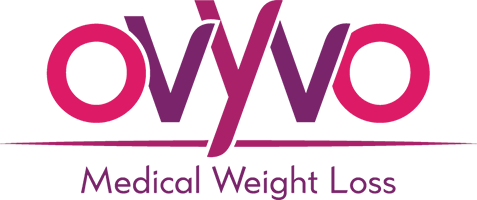A healthy diet plays a critical role in weight loss. But what you eat is generally more important than how much you eat. And when it comes to maintaining a healthy diet that will help you reach your weight loss goals, fiber is the not-so-secret ingredient you may not be getting enough of.
What Is Fiber?
Often referred to as roughage, fiber is a part of plants that we are mostly unable to digest. There are two types of fiber, and both are uniquely beneficial to our health: soluble fiber (meaning it dissolves in water) and insoluble fiber (meaning it does not dissolve in water).
During digestion, soluble fiber mixes with water to form a gel. In turn, this gel slows the digestive process. As you’ll read below, this impacts both appetite and blood sugar response. Later, insoluble fiber helps everything pass efficiently through the rest of your digestive tract (while benefitting your microbiome).
The Health Benefits of Fiber
In addition to it’s impact on weight loss, a diet rich in fiber has been shown to provide a number of other health benefits. These include (but are certainly not limited to)…
Decreases Appetite & Improves Insulin Response
Fiber forces your digestive process to slow down. And that helps in two important ways. First, you’ll feel satisfied longer simply because your food is taking more time to move through your system. Second, it slows the release of glucose into the bloodstream, which helps with insulin and blood sugar management.
Better Gut Health
Fiber remains mostly unchanged by the digestive process, But when it reaches the intestines (particularly the large intestine), the good bacteria there (your gut microbiome) digest some of it for energy. Keeping this friendly bacterium healthy benefits our own health.
Improved Regularity
Insoluble fiber draws water into and adds bulk to stool, both of which help to move it through your system more efficiently.
Lower Inflammation & Risk of Certain Diseases
Studies have shown a strong correlation between high fiber intake and better health. This includes reduced risks for heart and cardiovascular disease, reduced risks for colorectal and breast cancers, lower cholesterol, lower blood pressure, lower insulin levels, and less excess weight.
How To Add Fiber To Your Diet
Most Americans don’t include enough fiber in their diet. According to a recent Harvard study, the ideal amount of fiber should be about 25-30 grams per day. However, most people in the U.S. are consuming just 15 grams per day – only about half the recommended amount. To increase your fiber intake, be sure to incorporate the following high-fiber foods into your meals.
Foods Rich in Soluble Fiber (Slows Digestion)
- Apples
- Citrus Fruits
- Strawberries
- Blueberries
- Brussels Sprouts
- Seeds
- Oats
- Lentils
- Peas
Foods Rich in Insoluble Fiber (Improves Regularity)
- Beans
- Broccoli
- Green Beans
- Chia Seeds
- Cauliflower
- Potatoes
- Dark Leafy Greens
- Whole Grains
- Wheat Bran
Whole Plant Foods Vs Fiber Supplements
When it comes to the food you put in your body, whole is generally better. The same is true of fiber. There’s nothing inherently wrong with fiber supplements. But you’re only getting the isolated plant fiber, and you’re missing out on other important nutrients.
Additional Thoughts
Drink plenty of water.
Fiber draws water, so if you’re increasing your fiber intake, you’ll naturally need to increase your water intake. Since water helps to reduce appetite, that’s another win for your diet!
Increase your fiber intake gradually.
Going from 15 to 30 grams of fiber in a day is a significant jump that could cause some gastrointestinal discomfort. So take it easy at first. For the first few days, add just an extra 5 grams to your diet. Once you’re comfortable with that, add another 5 grams for a few days. Eventually, you’ll want about 5 to 10 grams of fiber per meal or snack (depending on how frequently you eat). Again, the goal is to reach 25-30 grams per day.
